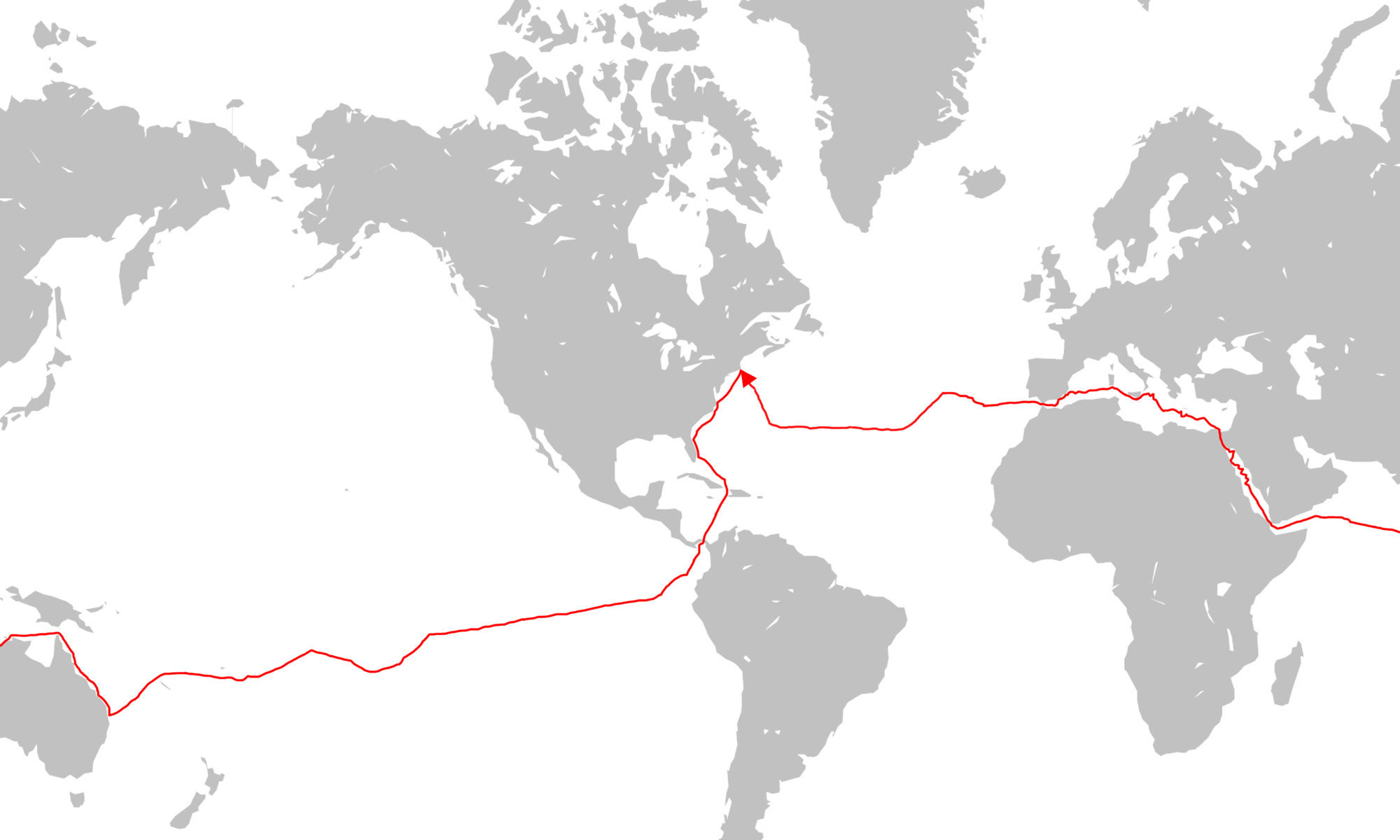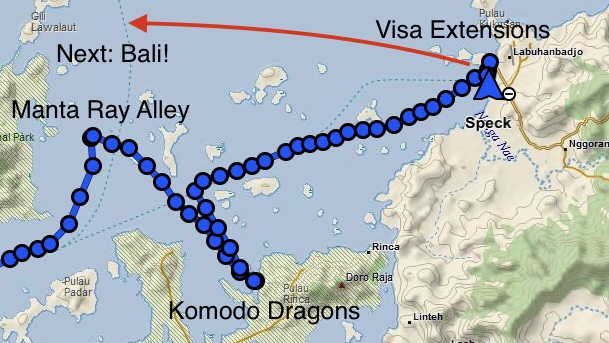
We had almost given up hope of catching a glimpse of the giant manta rays in Komodo National park when we came across a local who pointed us in the right direction. After a bit of swimming around, Byron pointed after one that he glimpsed and Dan dove after it. Sinking deeper and deeper, fixated on trying to get a good shot, the ray slipped farther and farther out of range. Dan, realizing he was out of breath and about 30 feet deep, turned around only to be face to face with five of these majestic creatures at point blank range. Already oxygen deprived a wave of shock and fear coursed through him immediately followed by a calm as the group of giant manta rays (easily twice his size) glided by respectfully.
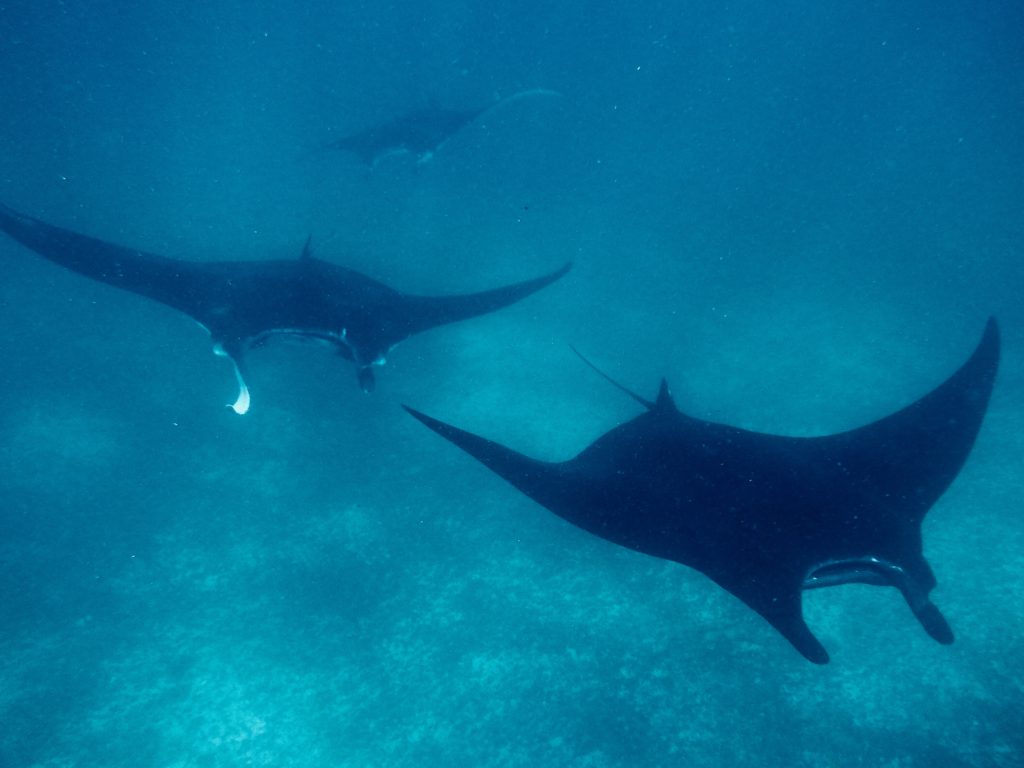
The two points in the front of the manta are it’s cephalic fins. While swimming these are rolled up as shown here. When feeding they are flared out to channel water into its mouth. We did not get a look at the bottom of these rays but judging by the size we think they are reef manta rays which measure 3 to 3.5 meters across.
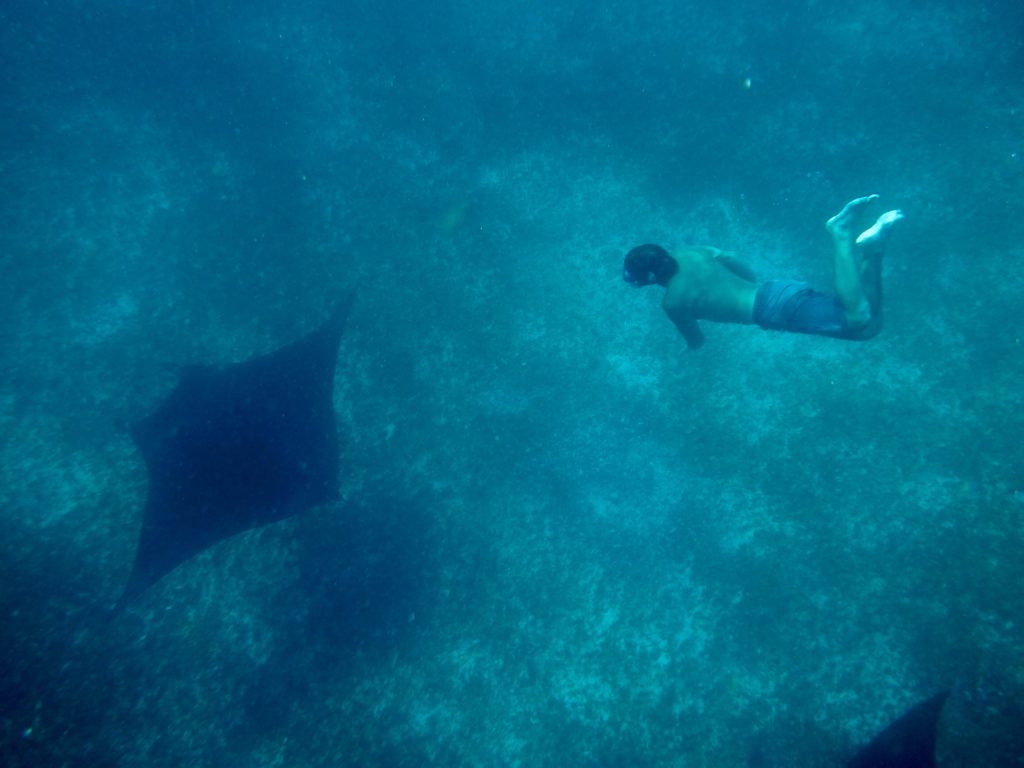
During the course of our last two underwater adventures, both of our underwater cameras, (Byron’s iPhone and Dan’s new Fuji) were destroyed in the process. It was all however taken in stride and the recovered once-in-a-lifetime photos turned out to be well worth it.
With older iPhones in hand (not waterproof) we headed to Rinca Island to try to find some Komodo Dragons. With no fancy zoom functions at our disposal we still managed to get some decent pictures of these prehistoric beasts. We decided to go with Rinca Island instead of Komodo island because it seemed more our style. A little off the beaten path and a little less formal. Our guide, Kuba, proved our decision right. We walked with him all over the island as he educated us about the dragons, the island, and his village.
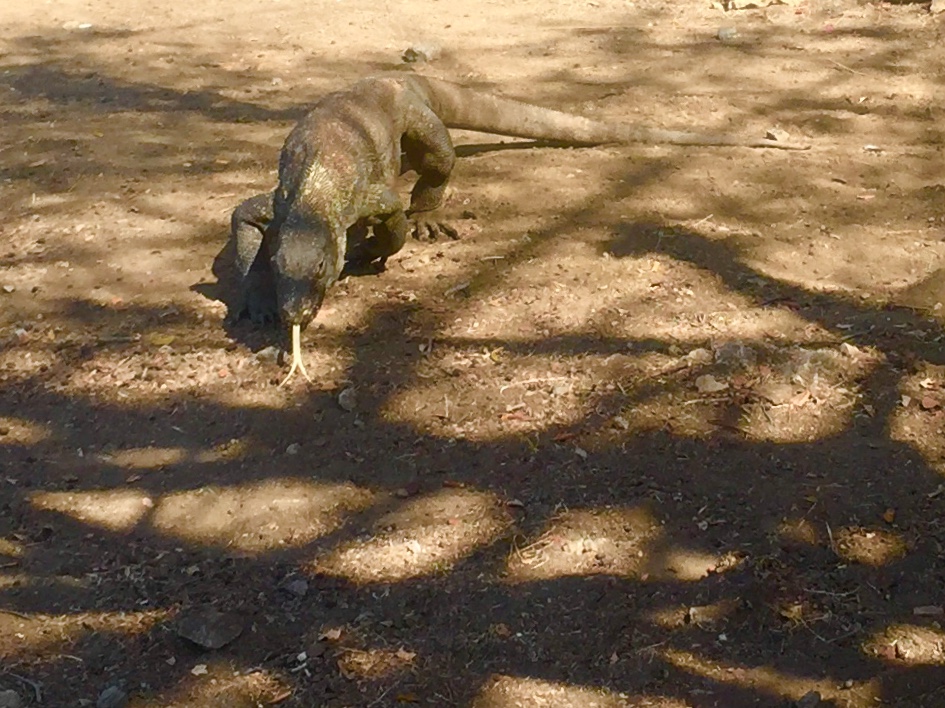
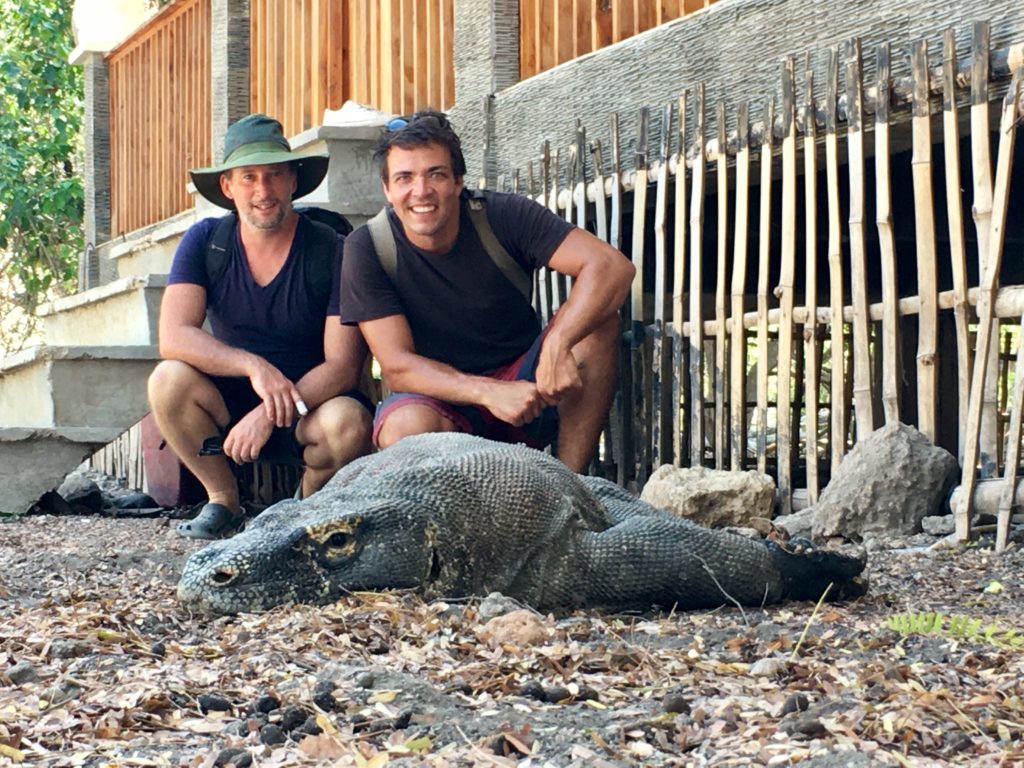
Komodos incubate in their eggs for 9 months. After which they hatch and immediately climb into trees to escape being eaten by their hungry parents. They live in the trees for three years, coming down only at night to feed. During this time, the smaller ones are also eaten by other dragons and birds. The ones that survive can grow up to 3 meters. It was previously thought that the main weapon in the komodo’s hunting kit was its oral bacteria which would slowly kill its prey. Recent research has found this bacteria to be more ordinary than previously thought. Researchers have also found glands in the lower jaw that contain various toxins amongst which seems to be an anticoagulant. So we are thinking they land a couple good bites, the wounds never heal so they fester and eventually lead to death of the prey.
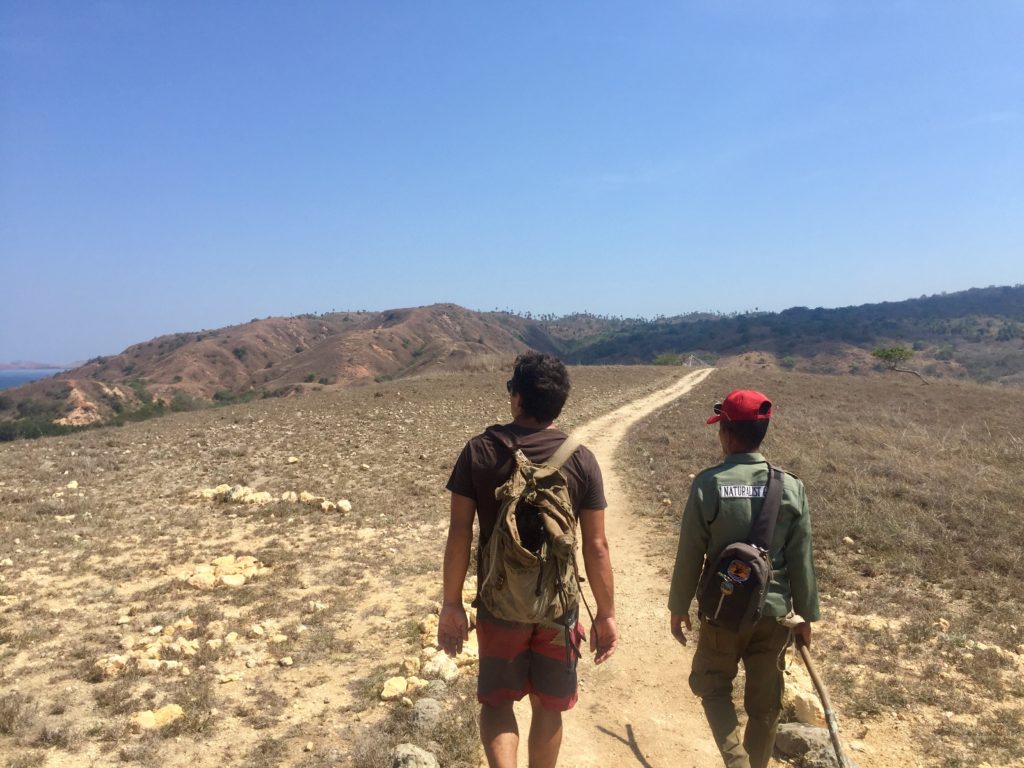
The road ahead disappears over the horizon. It is one of the treasured parts of our journey to dream of where that road leads as we disappear into that horizon.
